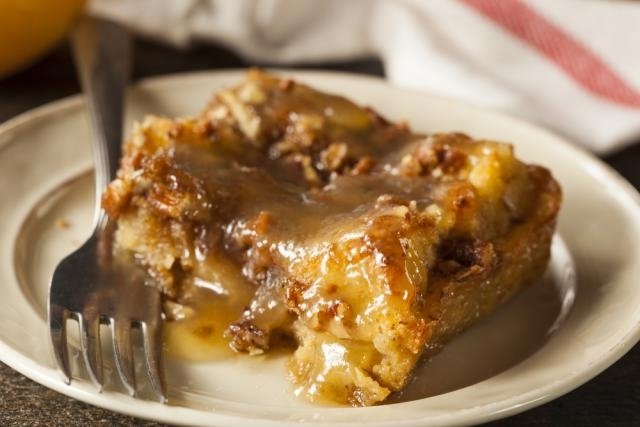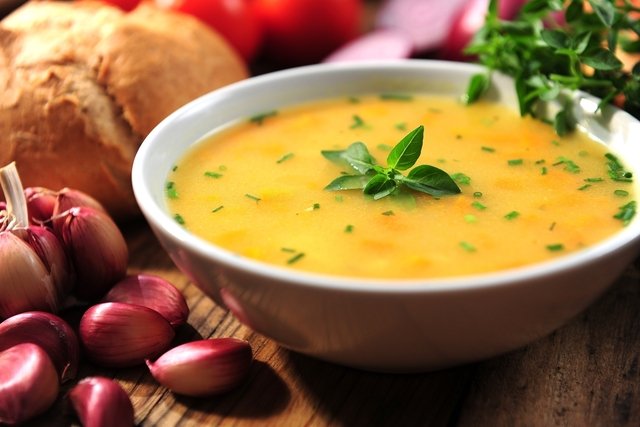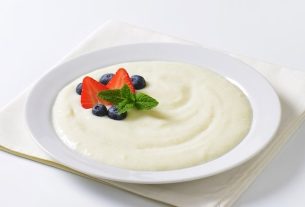The soft diet is a type of diet in which the food has a softer consistency, and is mainly recommended when transitioning from a liquid diet to a solid diet, especially after surgery on the digestive system.
In this diet, priority should be given to foods that are easy to digest and chew, such as jelly or apple puree or cooked pear, mashed potatoes or pumpkin, and shredded chicken, for example.
It is important that the soft diet is guided by a nutritionist so that it is adapted to the person’s nutritional needs and health condition.
Foods allowed on the soft diet
The foods allowed on the soft diet are:
- Rice or cornstarch cream;
- Mashed potatoes, pumpkin, chayote, carrot or plantain;
- Fruits are crushed to a puree consistency, it is important to remove the seeds and skin. They can also be consumed in the form of juice, which must be properly crushed and strained;
- Milk, yogurt and low-fat white cheeses, such as cottage or ricotta;
- Fish and white meats, such as skinless and shredded turkey and chicken;
- Scrambled or boiled eggs;
- Tofu;
- Gelatin, fruit popsicles, jellies, honey and pudding;
- Butter, peanut butter, olive oil and coconut oil;
- Bread without crust.
It is important that these foods are consumed cooked, in small portions, several times a day and that they are chewed well to facilitate digestion. Furthermore, it is important not to lie down for 2 to 3 hours after eating.
The soft diet is more attractive and better tolerated when pasty foods are placed separately, rather than mixed together.
What to avoid
Foods that should be avoided on a soft diet are hard, raw foods that are rich in fiber or fat, such as:
- Oilseeds: peanuts, walnuts, pistachios, cashews, almonds and Brazil nuts;
- Seeds: chia, sesame, pumpkin, flaxseed and sunflower;
- Whole Foods: whole-grain bread, brown rice, whole-grain crackers, pasta or whole-grain cereals;
- Red meat;
- Yellow cheeses;
- Sausages: sausage, chorizo, bacon, sausage and ham;
- Dehydrated fruits: raisins, prunes and apricots;
- Grains: beans, lentils, peas, chickpeas;
- Foods rich in fat: fried foods, sauces, nuggetsice cream, frozen pizzas and lasagna;
- Processed foods: stuffed biscuits, meals like fast food and cakes;
- Foods that irritate the digestive system: pepper, coffee, condiments and alcoholic beverages.
Depending on the indication of the soft diet, the nutritionist may suggest other dietary restrictions that he considers necessary, such as eliminating flatulent foods such as broccoli and cauliflower, for example.
Pasty diet menu
The following table provides an example of a 3-day soft diet menu:
The amounts and types of foods present in the soft diet vary according to the person’s weight and general health. Therefore, it is recommended that this diet is always recommended and guided by a nutritionist.
If you need an individualized diet, make an appointment with the nutritionist closest to your region:
Taking care of your health has never been easier!
When a soft diet is indicated
A soft diet may be indicated in the following situations:
- Intestinal surgeries, such as bariatric surgery, gastric or intestinal resection;
- Difficulty chewing or swallowing due to inflammation, presence of wounds or motor or structural changes in the mouth or throat;
- Maxillofacial surgery;
- Esophageal or intestinal stenosis;
- Esophageal varices;
- Gastrointestinal infection, such as gastroenteritis or diarrhea;
- Severe mental retardation;
- Colostomy;
- Gastroesophageal reflux;
- Diverticulitis;
- Inflammatory bowel disease;
- Before colonoscopy.
Furthermore, a soft diet may also be recommended by a doctor or nutritionist in cases of diseases such as amyotrophic lateral sclerosis (ALS), for example.
Recipes for the soft diet
Some recipes that can be included in the pasty diet are:
1. Bread pudding

Bread pudding is simple to make and can be used for snacks, for example.
Ingredients:
- 1 level teaspoon of cinnamon powder;
- 1 dessert spoon (of sugar;
- 1 pinch of salt;
- 1 slice of chopped bread;
- 1/2 cup (tea) of milk;
- 1 lightly beaten egg;
- 2 drops of vanilla essence.
Preparation mode:
Mix the cinnamon and sugar. Grease a small mold with a little butter or olive oil. Sprinkle the cinnamon and sugar mixture on the bottom of the pan and add the chopped bread. In another container, mix the milk with the egg, vanilla and salt. Then pour the mixture over the bread, mixing well. Place this mixture in the mold and bake in a bain-marie for approximately 30 minutes or until a toothpick comes out clean from the center of the pudding.
2. Vegetable and chicken cream
This cream is easy to digest and can be used for lunch or dinner.
Ingredients:
- 3 medium potatoes;
- 2 cassava or baroa potatoes;
- 2 small carrots;
- 1 small onion;
- 500 g of shredded chicken breast;
- Green smell to taste;
- Olive oil to taste;
- 3 cloves of garlic;
- Salt to taste;
- Grated cheese or grated mozzarella (optional).
Preparation mode:
Peel and cut the vegetables. Place the olive oil and garlic in a pressure cooker, then add the cut vegetables and onion cream. Cover with boiling water until the vegetables are completely covered and cover the pan.
Leave under pressure for 8 minutes and remove. After opening the pan, remove the vegetables with the broth and blend in a blender for 2 minutes.
In a pan, sauté the chicken breast with salt to taste, olive oil and onion. Pour the broth over the chicken and stir well, turning off the heat and sprinkling green scent on top. If necessary, blend the mixture with the chicken in the blender as well. Serve immediately with grated cheese (optional).
3. Banana vitamin
Banana smoothie can be used as a cold and refreshing snack that also quenches your craving for sweets.
Ingredients:
- 1 slice of mango;
- 1 pot of natural yogurt;
- 1 frozen banana in slices;
- 1 tablespoon of honey.
Preparation mode:
Remove the banana from the freezer and let it thaw for about 10 to 15 minutes, or place the frozen slices in the microwave for 15 seconds, to make it easier to blend. Blend all ingredients in a blender or with a hand mixer.
Bibliography
- NIH. Bland diet. Disponível em: <https://medlineplus.gov/ency/patientinstructions/000068.htm#:~:text=A%20bland%20diet%20includes%20foods,drinks%20with%20caffeine%20in%20them.>. Acesso em 18 jan 2023
- NIH. Bland Diet. 2022. Available at: <https://www.ncbi.nlm.nih.gov/books/NBK538142/>. Accessed on January 18, 2023

Sign up for our newsletter and stay up to date with exclusive news
that can transform your routine!
Warning: Undefined array key "title" in /home/storelat/public_html/wp-content/plugins/link-whisper-premium/templates/frontend/related-posts.php on line 12
Warning: Undefined array key "title_tag" in /home/storelat/public_html/wp-content/plugins/link-whisper-premium/templates/frontend/related-posts.php on line 13




